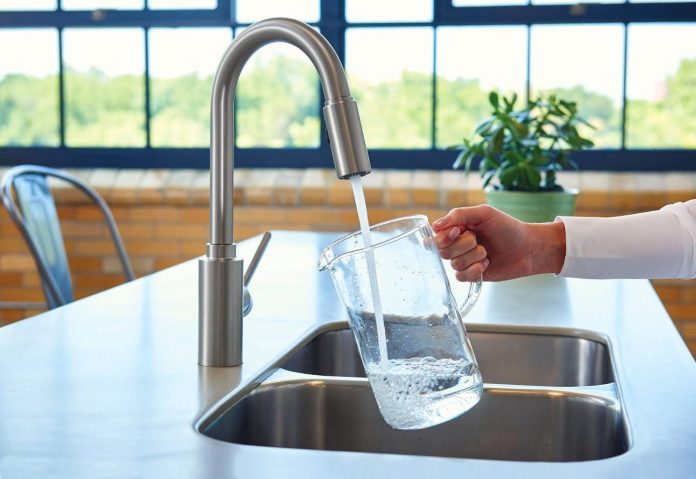Every week, Etnia Nativa writes a new episode concerning culture and heritage, focusing on various aspects of native knowledge, transcendental wisdom, and the importance of upholding our true identity. The goal is to educate readers and encourage them to embrace a genuine island state of consciousness.
In this segment, Etnia Nativa shares some details regarding the beginning of the industrial production of drinking water on Aruba. Our island has no significant natural sources of fresh water (such as naturally occurring groundwater, rivers, or lakes). Add to that the very rain that falls. Today, our drinking water is obtained by desalination of seawater.
During the colonial era, many stone houses were built with an efficient system that allowed the collection of the scarce rainfall, while others depended on a few wells that were dug. Although the history of seawater desalination in Aruba began with the Gold Mining Company, it was not until 1932, with the beginning of the booming economic era, that seawater desalination became the most important source for the production of drinking water by the L.W.V.
When Lago Oil and Transport Company established itself in Aruba, a solution had to be found for the supply of drinking water. The distillation plant and stock reservoirs were projected in the central part of Aruba at Balashi, so that in subsequent expansions, the entire island could be supplied with water. And Through this process, Aruba received a novice in the field of water supply and distribution, namely that pure distilled seawater could reach every household through a city distribution center for drinking and domestic water needs. One year later, the first evaporator installation was put into operation at Balashi to serve first Oranjestad and then St. Nicolaas.
In a short time, the initial capacity of the storage reservoirs was increased in order to maintain a constant pressure on the distribution lines during peak hours by building water towers in Oranjestad and St. Nicolaas in 1939.
At that time, in the interior of the island, houses were widely dispersed, and as the cost of expanding pipes was very high, this had to happen gradually over the years. The districts of Santa Cruz, Noord-Paadera, Pos Chiquito, Savaneta, Brasil, Papillon, Santa Martha, Siribana, and Cashero were part of a main pipeline.
Drinking water produced by WEB Aruba NV is pumped into storage tanks that serve as buffers for the desalination process and are installed at strategic high points on Aruba, with a total capacity of 65,393 cubic meters. Finally, the drinking water is pumped to the distribution system through a main header.
WEB Aruba NV has been producing water for the island since 1932 and also began generating Electric energy in 1958. It uses a combination of Multi-Stage Flash Distillation and Seawater Reverse Osmosis to desalinate seawater.
As a consequence of five well-defined steps, Aruba achieves the production of one of the purest drinking waters in the world, starting with the collection and subsequent filtration and reaching step number 3 of the desalination process, where the hard work begins. The ocean that surrounds us provides salt water that contains up to six thousand times more salt than fresh water. In desalination, the water is pushed through special membranes; this process is known as seawater reverse osmosis (SWRO). This reduces the salt level in the water from 55,000 ppm to just 400 ppm, but the water is still too salty to be used for drinking, so they repeat the process, bringing the salinity down to 8–10 ppm. To make sure that the process was successful, the company conducted laboratory tests and thoroughly analyzed the results.
The last step is its remineralization, in which certain minerals are incorporated into the water. At that point, the water is allowed to run over chunks of limestone, where it absorbs the important minerals it lost in the previous step. This not only ensures that the water meets WHO standards for mineral content but also makes the water taste better.
The last step (5) consists of adding certain phosphates regulated by the NSF International Organization to be transported to their final destinations through the pipeline network. This element is incorporated to prevent the inside of the pipe from slowly deteriorating, releasing iron and copper particles into the water, which would compromise its purity. Not only are phosphates added, but the water is also disinfected with ultraviolet (UV) rays to ensure that there are not even the slightest micro contaminants present. Aruba is a world leader when it comes to healthy, quality drinking water.
If you have a keen interest in exploring Aruba’s heritage, Etnia Nativa`s experience is highly recommended. The owner’s firsthand explanations and insights set Etnia Nativa apart of the rest. A personal touch which adds depth and authenticity to the experience, allowing visitors to forge a meaningful connection with the island’s history, engaging valuable insights and a more profound understanding of Aruba’s cultural traditions.
Appointments are necessary to ensure a personalized and immersive experience. etnianativa03@gmail.com or WhatsApp (messages only) at +297 592 2702.

















